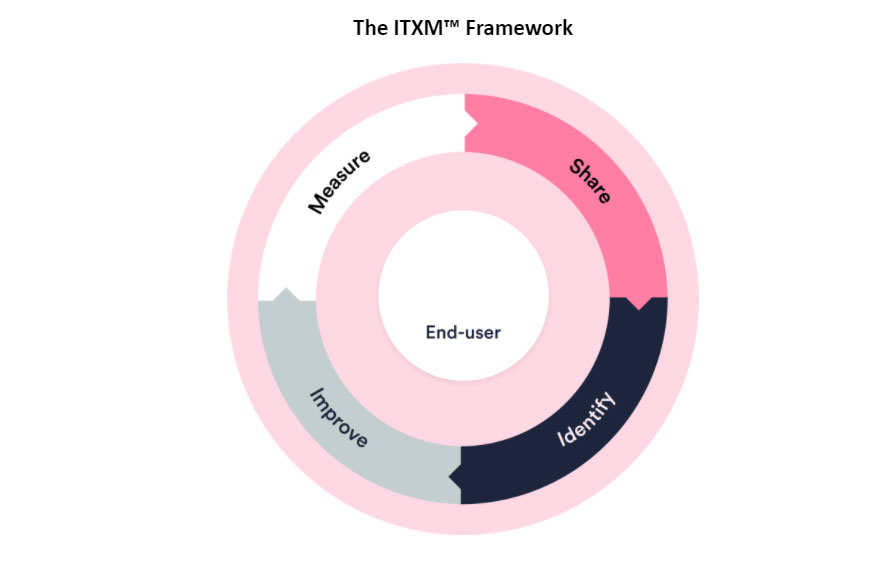What CEOs Should Expect from Their CIOs in 2022

With most businesses reliant on technology for optimal business operations and customer outcomes, there’s undoubtedly a need for CIOs to provide their CEOs with assurances that business-as-usual (BAU) IT operations are fit for 2022 and beyond. But, in competitive advantage terms, these BAU IT operations are merely table stakes for the CIOs and the CEOs they report to. Instead, there’s likely much that still needs to change – or continue to be changed – by CIOs and their teams to better reflect the needs of their organizations, employees, and customers.
In many ways, it’s a continuing jigsaw of IT-related improvements that’s both been brought into greater focus and accelerated by the global pandemic – with the productivity of employees and business operations at risk through potentially outdated IT practices. Importantly, some of these are challenges and opportunities that are worthy of a CEO’s attention and, where necessary, the refocusing of corporate budgets on the initiatives that will make the biggest impact on business operations and outcomes.
Employee productivity improvement should be a key CEO expectation of CIOs in 2022
Hopefully, the challenges of the last 18-24 months proved the worth and ingenuity of IT teams around the globe. Especially in ensuring that employees can be productive while staying safe. In 2022, this focus on employee productivity needs to continue – such that, in addition to meeting board-level concerns related to cybersecurity, in particular, CIOs should focus on two key opportunities to ensure that employee productivity is optimized.
The first of these opportunities – digital transformation – is now over a decade old, with the use of technology to enhance the traditional and likely ineffective, manually-intensive business processes already accelerated thanks to the remote-working needs of the pandemic. Importantly, digital transformation is an ongoing need and not a one-off project with a finite end date.
However, while much of what’s needed in terms of operational digital transformation can be brought about by what IT might call “enterprise service management” – the sharing of IT service management (ITSM) capabilities to improve the operations, services, experiences, and outcomes of other business functions – there’s potentially an overlooked issue. This is the disconnect between the performance-based views of the IT provider and the employees they support.
It’s why the interest in, and adoption of, IT experience management (ITXM™) capabilities have grown rapidly in recent years – with the disconnect between supply-side and demand-side views of IT performance causing operational and productivity-related issues. Not only in the status quo but looking forward too. For example, in situations where IT-related improvements improve IT’s efficiency but to the detriment of employee and business productivity. This is the second opportunity – and one that needs to be firmly grasped to ensure that the investments in the first add the value that’s expected.
Why CEOs need their CIOs to invest in ITXM
It’s important to appreciate that the aforementioned disconnect isn’t just a legacy issue, it’s also something that can be amplified going forward. Where, while digital transformation initiatives will continue to deliver greater opportunities for organizations to exploit technology and data, there’s also a need to ensure that the right improvements are being made in the right places (and that suboptimal decisions aren’t being made about the technology-based changes to the status quo). This is where ITXM capabilities help to ensure that any new or changed IT services and support capabilities are focused on the needs of the people that make organizations tick – their employees.
For example, an organization that has executed an enterprise service management strategy, or is currently doing so, might not be improving the employee experience and employee productivity in doing so. For example, if some current IT practices are currently “failing” in employee experience terms, then sharing them with other business functions isn’t going to improve the employee experience they deliver. In fact, it could harm it.
CEOs need their CIOs to start their ITXM investment now – and here’s how
If your CIO is focused on facilitating better business operations and outcomes, then they need to be focused on employee experience as an enabler of this. Importantly, this takes time and cultural change to achieve. We tell organizations that if they want an employee-centric IT provider in 1-2 years, then they need to start changing now. However, for many organizations, even those that have already bought into the importance of employee experience management, it can be difficult to know where to start with experience management.
To help, we’ve created the ITXM™ Framework to assist organizations of all sizes – and whether they’re HappySignals customers or not – in both starting and succeeding with their experience management journey. It’s a proven way to transform your organization’s corporate IT capabilities, whether internal or outsourced, from process or technology-centric to human-centric. That allows IT to focus on the experiences end-users have and to improve the factors that matter most.
The ITXM™ Framework
The first step in the ITXM™ Framework is the measurement of end-user experiences, with the feedback then shared with various business stakeholders (including IT) and third parties such as partners, vendors, and shareholders.
In the next step, issues and opportunities are identified from the experience data – this highlights where employees are frustrated by, and losing the most productivity with, IT services and support. Finally, improvements are made, based on business value, such that IT operations and outcomes start to bring more smiles and less wasted time for both end-users and IT personnel in their daily work.
As improvements are actioned, the measurement continues and both the absolute state and the achieved progress can be shared – with an organization going around the framework cycle again, tackling more end-user issues and opportunities as the benefits of experience management permeate the organization.
So, when you’re reading or listening to the 2022 ambitions of your organization’s CIO, in addition to the mandatory focus on, and investment in, information security and digital transformation, also look for anything related to employee experience. If nothing is obvious, then ask “What impact will these planned changes have on employee productivity?” It might be the reinvention of your IT provider that your business operations and outcomes need.
To find out more about the need for experience management and the ITXM Framework, please visit www.happysignals.com
Add CEOWORLD magazine to your Google News feed.
Follow CEOWORLD magazine headlines on: Google News, LinkedIn, Twitter, and Facebook.
This report/news/ranking/statistics has been prepared only for general guidance on matters of interest and does not constitute professional advice. You should not act upon the information contained in this publication without obtaining specific professional advice. No representation or warranty (express or implied) is given as to the accuracy or completeness of the information contained in this publication, and, to the extent permitted by law, CEOWORLD magazine does not accept or assume any liability, responsibility or duty of care for any consequences of you or anyone else acting, or refraining to act, in reliance on the information contained in this publication or for any decision based on it.
Copyright 2024 The CEOWORLD magazine. All rights reserved. This material (and any extract from it) must not be copied, redistributed or placed on any website, without CEOWORLD magazine' prior written consent. For media queries, please contact: info@ceoworld.biz
SUBSCRIBE NEWSLETTER









